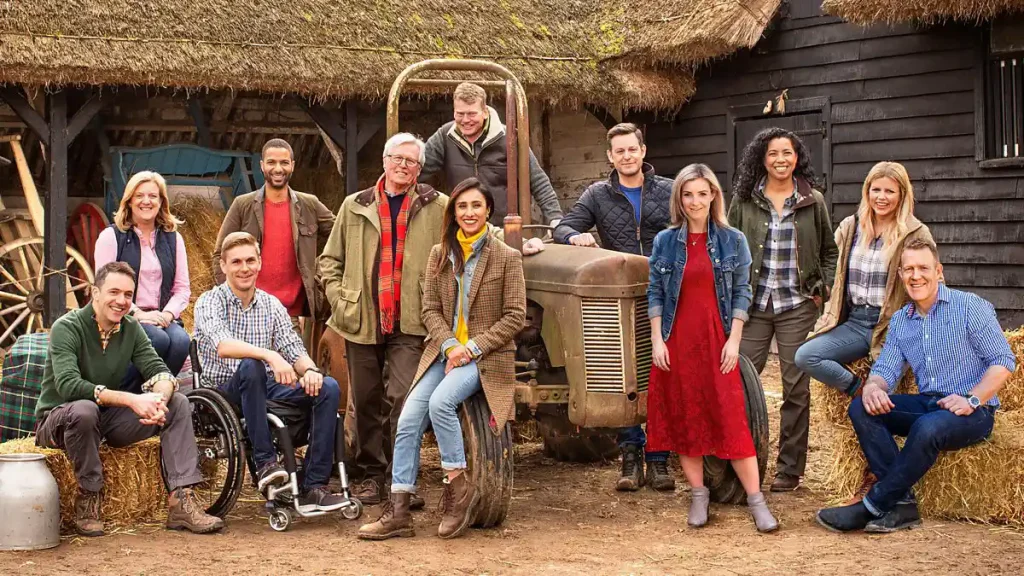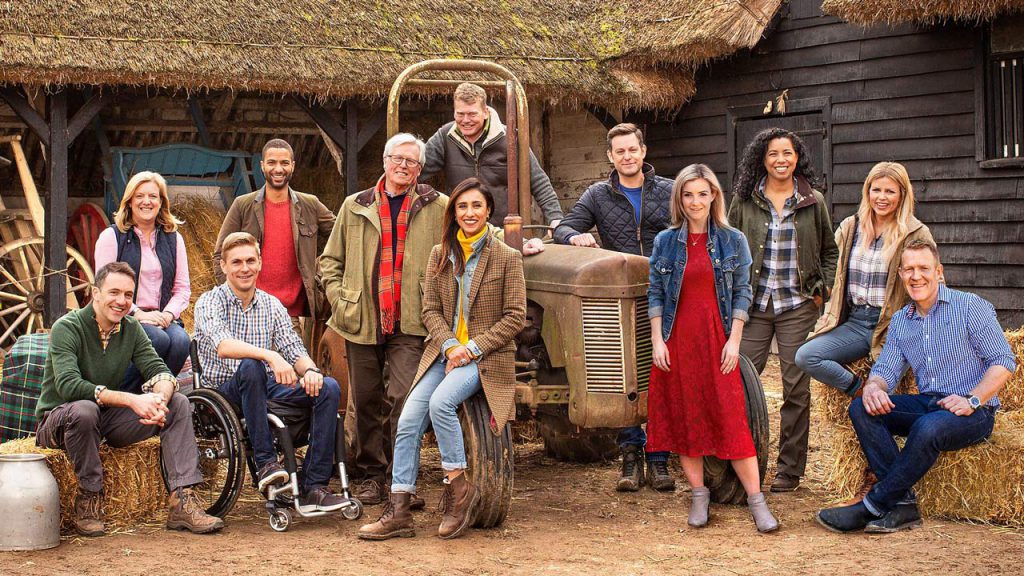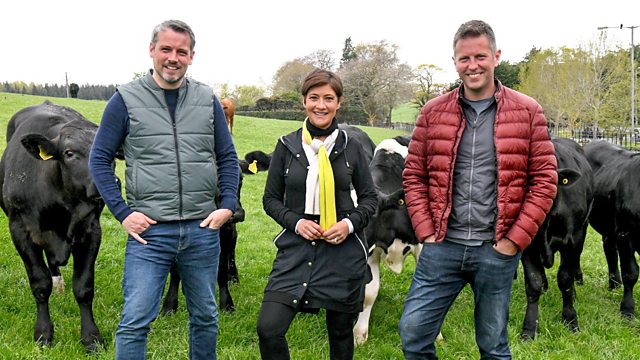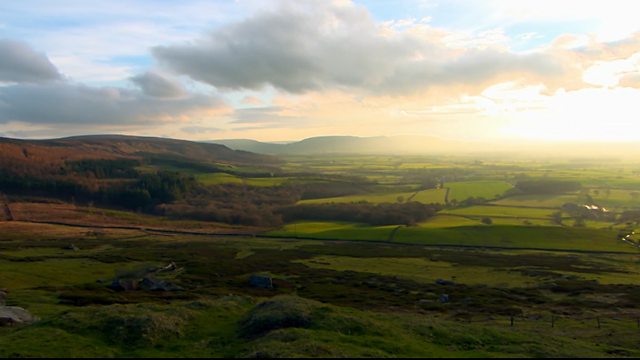Countryfile – Agmash Auction Hub – Adam Henson and Charlotte Smith take you on an exclusive journey through the bustling grounds of Cheffins’ renowned agricultural machinery auction, located in the picturesque Cambridgeshire countryside. Known as the epicenter for trading in high-quality agricultural machines, this iconic auction serves as a fascinating glimpse into the rapidly evolving world of modern farming technologies. Prior to the eagerly anticipated auction, co-host Charlotte Smith lends a helping hand to local farmers William Wombwell and Chris Haylock. With meticulous attention to detail, she assists them in putting the finishing touches on their machinery, ensuring each piece sparkles and shines before it’s presented to potential buyers. The goal? To secure top-dollar bids when their farming equipment finally goes under the auctioneer’s hammer.
Simultaneously, Adam Henson dives deep into the intricate history of this monumental event with the expert guidance of Joe Page, the seasoned auctioneer at the helm. Spread across a sprawling 42-acre site, Cheffins holds the title of being Europe’s largest auction dedicated solely to farming machinery. Adam gets a firsthand experience of the adrenaline-pumping bidding process as he hops onto a specially designed mobile auction car, becoming a part of the high-stakes auction action himself. As Charlotte roams through the maze-like setup of the auction site, she encounters a diverse cast of interesting characters. She discovers how Cheffins’ auction has become a magnet for international buyers, who are drawn to the UK’s top-quality, pre-owned farming equipment. They come not just to bid, but to secure and ship machinery that carries a mark of authentic British craftsmanship and provenance.
Going beyond the boundaries of the auction site, the team also visits a unique family of mechanical enthusiasts. These individuals specialize in the painstaking restoration of vintage tractors from days gone by. These antique pieces are not just historical artifacts but are brimming with untapped potential, ripe for innovative reinventions. In a separate yet equally compelling segment, investigative reporter Tom Heap delves into the complex array of factors leading to the ecological crisis affecting Lough Neagh, the United Kingdom’s most expansive lake. His thorough examination uncovers a ‘perfect storm’ of circumstances contributing to what could only be described as the lake’s troubling ‘death.’
So whether you’re a farming aficionado, an environmental enthusiast, or simply someone who loves a good story, this comprehensive tour of Cheffins’ agricultural machinery auction and the captivating worlds it intersects is bound to keep you on the edge of your seat.
Countryfile – Agmash Auction Hub
A Window into the Changing Mechanics of Farming
The roaring of engines fills the air as tractors parade into the sprawling grounds of Cheffins Auctioneers in Cambridgeshire. This is the famous Agmash auction, Europe’s largest sale of agricultural machinery. Twice a year, farmers flock here from across the UK and abroad to buy and sell the vital tools of their trade.
For over 80 years, Cheffins has brought together buyers and sellers in this ultimate trading floor for farm equipment. As an auction firm specialized in agriculture, they have their finger on the pulse of new innovations and changing trends in the industry. Their biannual Agmash auctions provide a fascinating window into the ever-evolving mechanics of farming.
On this day, the site is bustling with activity. Chrome gleams and engines rumble as machines are carefully lined up in rows awaiting their turn under the gavel. In the lead up to the main event, there is a palpable sense of excitement and anticipation.
Gleaming Giants Primed for Auction
Charlotte Smith meets up with farmers William Wombwell and Chris Haylock, who have entered some of their cherished but aging machinery into the auction. There is a tinge of sadness at letting go of these gleaming giants that have served them well over the years. But the potential for a handsome sale price tempts them into bidding farewell.
Charlotte lends a hand to get the tractors and combine harvesters looking pristine. They scrub and polish until the hulking frames shine, ready to fetch the highest bid. As Charlotte says, when it comes to auctions, cleanliness is next to profitability. She discovers that even mud in the right places can decrease value if it suggests improper care.
With aging equipment, it is often beneficial for farmers to trade up for newer, more efficient models. Auctions like Agmash serve as the ideal marketplace for buyers and sellers of pre-owned farm machinery. This circulation of equipment helps farmers keep pace with advancing technology.
History and Scope of Europe’s Largest Farm Auction
Adam Henson meets with Joe Page, an auctioneer with deep roots at Cheffins. Joe’s father conducted the first-ever Cheffins auction in 1939. Since then, the company has steadily grown the Agmash event into the farming world’s premier commercial auction.
In the early days, sales were held in quaint country pubs across Cambridgeshire. Today, Agmash sprawls across a 42-acre site purpose-built to accommodate thousands of lots and bidders. Over 2,000 machines trade owners here in just two days.
Joe describes the electric atmosphere of the auction and the unique community it creates. Generations of families have bought and sold machinery at Agmash auctions. Retired farmers come just for the camaraderie. It offers a sense of continuity and tradition, even as new technologies transform farming equipment.
Ringside at the Trading Action
Eager to get into the thick of the bidding action, Adam climbs aboard one of the auctioneer’s cars that shuttle between the various bidding rings onsite. As Joe scans the crowd with a trained eye, spotting subtle nods and gestures, Adam tries to keep up with the rapid-fire yet carefully choreographed bidding.
The auctioneer’s rhythm and cadence are hypnotic, designed to control the tempo of the bidding and coax just a little more from buyers with each increment. Adam attempts some tentative auctioneering but cannot match Joe’s flawless flow and pacing. It is a skill honed over years at the epicenter of agricultural commerce.
Watching the bidding drama unfold, Adam realizes the auction system brings accountability and transparency for both buyers and sellers. Open competition enables fair market value discovery. Farmers unwilling to spend beyond a machine’s worth will not overpay out of desperation.
International Demand for Quality Machinery
While meandering between the lots, Charlotte encounters buyers from around the world inspecting the machines. Agmash sees significant demand from overseas, especially Europe and North America.
She meets the Dell family, tractor enthusiasts from the Netherlands who have been coming to Agmash for over 20 years. They appreciate the quality and care given to British machines compared to those in other countries. Brand heritage adds provenance.
The global reach of Agmash signals the renown of British agricultural engineering. Decades of innovation and expertise are manifested in these auctioned tractors and implements. For international buyers, the chance to incorporate a machine with real heritage into their fleet is worth the shipping cost.
Breathing Life into Vintage Machinery
Beyond the auction grounds, Charlotte visits David Nelson and his two sons, passionate tractor restorers near Lincoln. Their workshop is filled with vintage tractors in various states of repair.
The Nelsons have a trained eye for spotting diamonds in the rough – tired old tractors with good bones that, with meticulous restoration, can be returned to their former glory. Charlotte gets her hands dirty helping strip down an engine for cleaning and rebuild.
By sourcing old tractors and equipment at auction, the Nelsons revive and preserve agricultural history. Their painstaking restorations allow obsolete machines to live and work again. Auctions like Agmash support this niche of vintage tractor devotees keeping yesteryear’s iron horses on the march.
The Death of Lough Neagh
While agriculture evolves with new technologies, traditional practices can have unintended consequences on the environment. The UK’s largest lake, Lough Neagh in Northern Ireland, faces ecological collapse due to a confluence of factors driven by farming and land use changes.
Tom Heap investigates this complex story, unpacking generations of policy decisions and nutrient loading that are robbing the lough of oxygen. As an ecosystem reliant on balance, the tipping point has been reached, and radical intervention is required to resuscitate Lough Neagh.
The lough supports a diverse web of wildlife, from salmon to eels to rare diving ducks. It provides water for over 400,000 people. Yet the signs of demise are evident in algal blooms and dying mussel beds. Local people fear the loss of livelihoods and a precious natural wonder.
This environmental saga underscores the need for accountability and transparency, much like the auction system aims to achieve in agricultural commerce. Only by acknowledging failures can more sustainable solutions be forged. With concerted effort, the tide may still turn for Lough Neagh.
The Changing Tide of Farming
Auctions like Agmash represent the evolving ecosystem of agriculture. New technologies continually transform practices and equipment, yet certain traditions endure. The circulation of machines – whether vintage or cutting-edge – propels innovation and efficiency while building community.
Lough Neagh’s precarious state illustrates how easily balance is lost. Yet there is hope for revival with diligent understanding of what ails the land and humble collective effort to heal it. Such is the nature of farming – always changing, but forever interwoven with tradition, community and our shared environment.
Conclusion
The Agmash auction provides a snapshot of modern agriculture in flux. As farming evolves, so too must the tools and marketplace that supply this timeless profession. Yet some traditions remain constant, like the community and competitive spirit stoked by the auction atmosphere. Lough Neagh represents the fragile balance farmers must strike with the land and serves as a reminder that accountability and transparency are vital, even as practices change. Auctions like Agmash exemplify the enduring machinery that drives agriculture into the future while remaining mindful of its heritage.
Frequently Asked Questions
What is the Agmash auction?
Agmash is Europe’s largest auction of agricultural machinery, held biannually by Cheffins auctioneers at their 42-acre site in Cambridgeshire. Over 2,000 lots are sold over 2 days to farmers from across Britain and overseas.
Why do farmers buy and sell at Agmash?
Farmers sell aging tractors and equipment for newer, more efficient models. The auction allows fair value discovery through open bidding. Buyers acquire quality British-made machines often sought after internationally.
How did Cheffins start?
Cheffins held their first auction in 1939 in Cambridgeshire pubs before growing into the vast Agmash event. Auctioneering skills are passed down generations at family-run Cheffins.
Who attends the auction?
Agmash draws farmers, collectors and enthusiasts. Overseas buyers value British agricultural craftsmanship. Retired farmers enjoy the community. Vintage restorers find old iron horses to revive.
Why is Lough Neagh in decline?
Years of nutrient pollution, land use changes and reduced oxygen are collapsing the delicate ecosystem of Lough Neagh. Urgent intervention is needed to halt the UK’s largest lake from ecological collapse.




